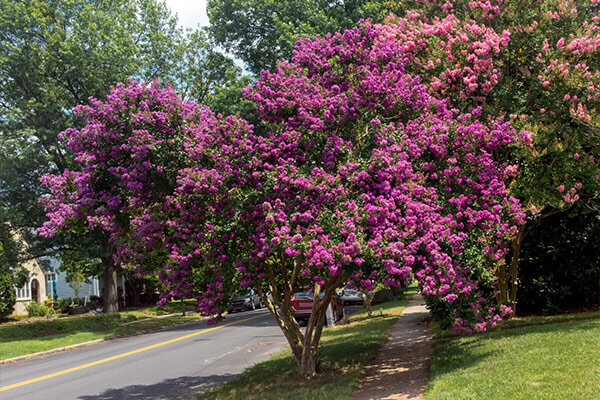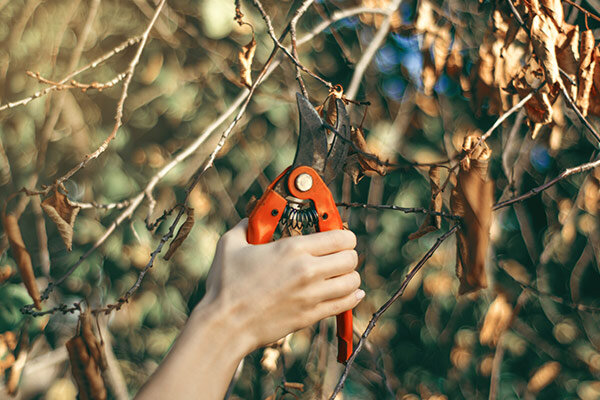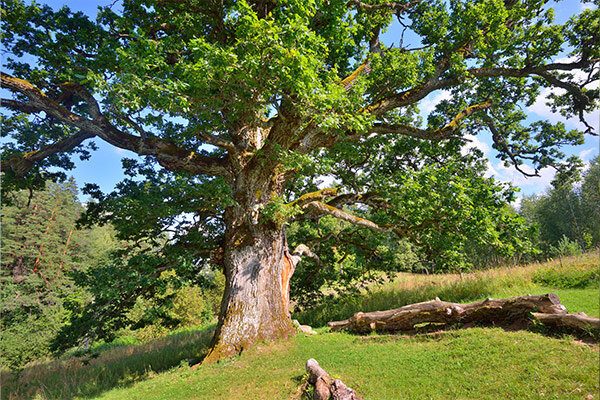The Ultimate Guide to Tree Trimming in Kalamazoo: When, Why, and How
Ensuring your trees flourish year-round requires more than a casual glance or basic check-in. Instead, tree trimming has been practiced for thousands of years as the best way to keep trees healthy. Yet, if you’ve never done tree trimming before, it may seem like a big task.
In this comprehensive guide, we’ll explore the details of tree trimming, walking through the seasons and understanding why keeping your trees healthy is more than just a matter of aesthetics. Whether you’re a seasoned gardener or a novice enthusiast in Kalamazoo and Portage, discovering when to trim, why it matters, and how to execute it effectively will elevate your tree care game. Let’s get into it.
When To Trim Your Trees
Seasonal Timing
Understanding the seasonal rhythm of tree trimming is essential for nurturing healthy, vibrant trees. Each season brings unique challenges and opportunities, shaping the goals and techniques of tree trimming in different ways.
Spring: Encouraging Growth
Springtime, with its burst of new growth, is the ideal time for tree trimming. Focus on removing deadwood and shaping young branches to encourage healthy development as the year progresses.
Summer: Managing Tree Strength
As trees become their strongest in the summer, careful pruning of branches can control excessive growth, enhance air circulation, and address safety concerns. Remember: if your tree expands too much in summer, it will struggle to survive in the winter.
Fall: Promoting Longevity
Transitioning to fall, tree trimming focuses on removing weak or diseased branches. This not only fortifies the tree against the coming winter storms, but also contributes to overall tree health.
Winter: Dormant Pruning
Winter, when trees are dormant, provides an ideal window for more substantial pruning. Structural adjustments, crown thinning, and major trimming can be conducted without disrupting the tree’s natural processes.
While these are good general rules to follow, keep in mind the unique needs of your trees. Just like us, no two trees are completely alike, and it’s important to treat each one with individual care. If you’re unsure what type of care your tree may need, click here to contact our team today.
Signs That it’s Time to Trim
Trees, like any living organism, give us signs when they require attention. Recognizing these signs is crucial for timely and effective tree trimming. Here are some key indicators that it’s time to give your trees some professional care:
Overgrown Canopy: An excessively dense canopy may hinder sunlight penetration and air circulation, signaling the need for trimming to promote a healthier balance.
Dead or Diseased Branches: Dead or diseased branches are not only unsightly but can pose risks. Trim these branches promptly to prevent the spread of disease and enhance the tree’s overall well-being. Click here to learn more about dead, dying, and diseased branches.
Crossing or Crowded Branches: Branches that cross each other or are overly crowded create friction, potentially leading to damage. Trimming helps alleviate this stress and promotes better branch structure.
Storm Damage: After severe weather events, inspect your trees for storm damage. Broken or hanging branches should be promptly trimmed to prevent further harm and potential hazards.
Signs of Pests or Disease: Unexplained leaf loss, unusual spots, or signs of pest infestation indicate potential health issues. Trimming affected branches can curb the spread of pests and diseases.
Regularly checking your trees for these signs allows you to address issues before they become a problem, maintaining the health of your landscape. If in doubt, consulting with an arborist ensures a professional diagnosis and tailored trimming plan.
Why Tree Trimming Matters

It’s important to trim trees for more than just beauty. Instead, tree trimming is important for keeping your tree and the environment it lives in healthy. Let’s briefly take a look at some of the benefits of tree trimming.
5 Health Benefits of Tree Trimming
Regular tree trimming promotes tree health by removing dead or diseased branches, reducing the risk of infections, and allowing for robust growth. It also increase the life expectancy of your trees. There are 5 main health benefits to tree trimming:
1. Safety Considerations: Tree trimming is also important to keeping you and your visitors safe. Unhealth trees will eventually lose their limbs, which can fall and damage your property or even hurt somebody. The best way to prevent this is through proper tree services.
2. Safe, Sound Structure: Proper tree trimming will help balance your tree, making it less likely to topple over or splinter. You’ll need to remove crowded or crossing branches if you want a healthy tree canopy that won’t cave to bad weather.
3. Sunlight Penetration: Trimming helps sunlight reach all parts of the tree, which helps aid everyone’s favorite scientific process: photosynthesis. This is particularly important for the health of the tree and the surrounding plants (which may not be getting sunlight due to the tree’s canopy).
4. Air Circulation: Better air circulation is practically a guarantee of proper tree trimming. Healthy airflow reduces the risk of fungal infections and overall makes the tree healthier and happier.
5. Aesthetic Impact: Let’s face it, trimmed trees just look nice. Knowing how to trim your trees (or getting help from someone who does) is important if you want your trees to look their best.
We know this is a lot of information, but stay tuned. Now that we’ve talked about why tree trimming is important, let’s get into the nitty-gritty: how to trim your trees.
How to Trim Your Trees

Now that we’ve established the importance of tree trimming, let’s roll up our sleeves and dive into the practical aspects. Trimming your trees doesn’t need to be a difficult task; with the right tools and techniques, you can foster your trees’ growth so the absolutely flourish.
Tools and Equipment You’ll Need
- Pruning Shears: Ideal for small branches and twigs.
- Loppers: Suitable for thicker branches that pruning shears can’t handle.
- Pruning Saw: Essential for larger branches.
- Safety Gear: Don’t forget gloves and safety glasses for protection.
Basic Techniques
- Pruning Cuts: Make clean cuts just above a bud or lateral branch to encourage healthy regrowth.
- Branch Collar Preservation: Avoid cutting too close to the trunk; instead, leave what we call the branch collar intact for optimal healing.
- 3-Cut Method: For larger branches, use a three-cut technique to prevent bark tearing and ensure a smooth removal. Basically, this means you should cut only 1/3 of a branch at a time so it doesn’t splinter or damage the rest of the tree.
Deciduous and Evergreen Trees
- Deciduous Trees: Focus on removing dead or crowded branches during the dormant season for optimal regrowth in spring.
- Evergreen Trees: Lightly trim evergreen trees during the growing season, avoiding excessive removal of healthy foliage. Overall, these trees tend to require less attention than many others.
Remember, the key is not to overdo it: moderation is the name of the game. A well-trimmed tree will hold on to its natural form while benefiting from improved health and appearance. If you’re unsure or dealing with large or complex trees, consulting with a professional arborist ensures the job is done right.
Key Takeaways
Know When to Trim. Give your tree more room to grow in the spring and summer, but prepare it for winter by removing struggling branches. If your tree looks sick, you may want to trim it right away.
Know Why to Trim. If you keep in mind your tree’s health and aesthetics when trimming, you’ll be much happier with the end result.
Combine the Right Tools and the Right Knowledge. For the best chance of success, always use proper tools and proper techniques like the 3-Cut Method.
Contact Us
If you’d rather avoid the headache and have your trees trimmed by professionals, then American Arbor is here for all tree services in Kalamazoo, Portage, and the surrounding areas. Click here to contact us for more information.


